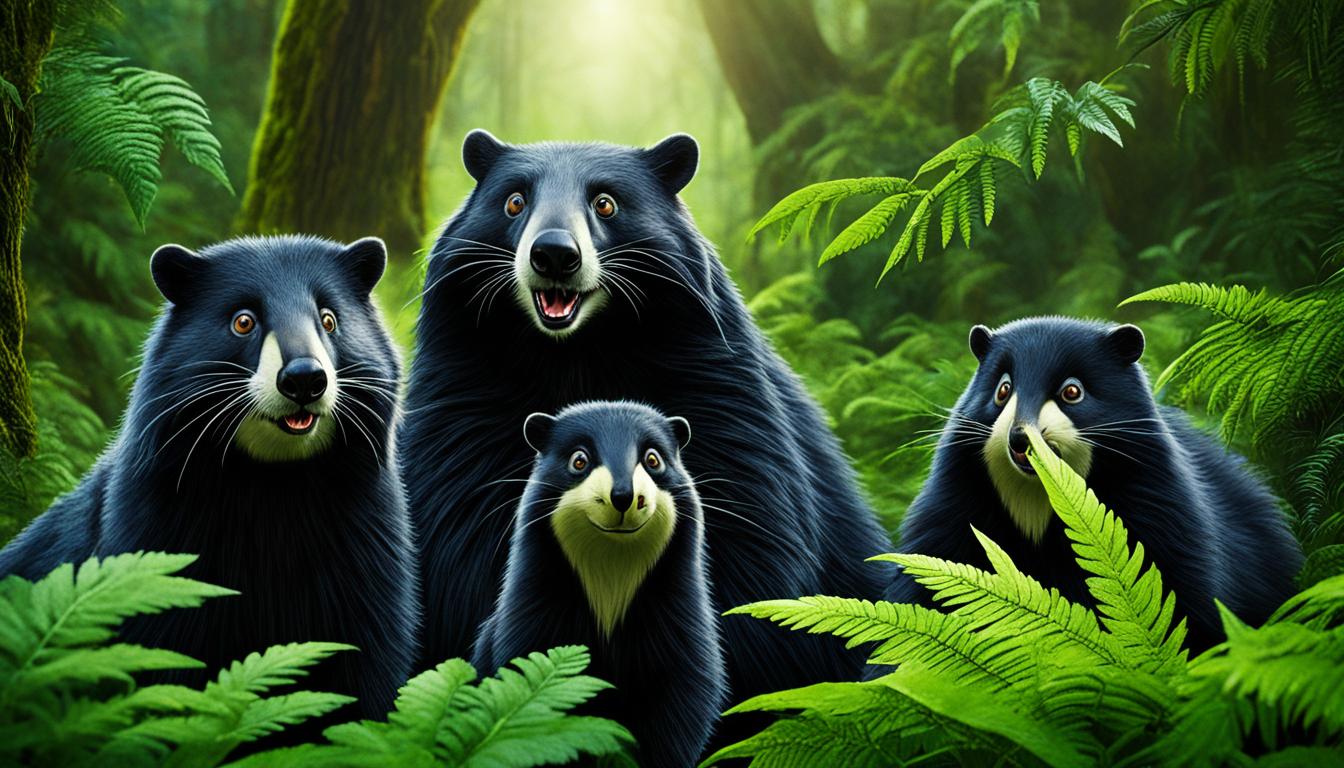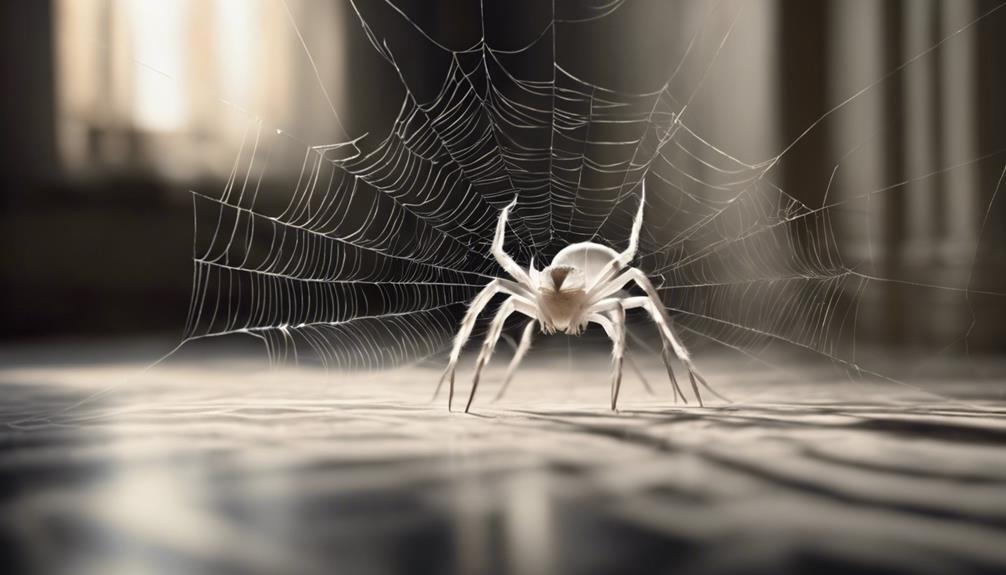Did you realize that the world of animal kingdom has a variety of intriguing creatures whose names begin with the letter H? From marine animals to birds and mammals, these creatures showcase a diverse array of special traits and thrive in different habitats. Join us on a tour of the animal kingdom as we discover some remarkable creatures that start with H.
Key Takeaways:
- Animals that start with H encompass a diverse range of species, from marine fish to land mammals and birds.
- Some notable examples include the haddock, harbor seal, harp seal, harpy eagle, hartebeest, hedgehog, hellbender, herring gull, hippopotamus, hoatzin, honey badger, honey bee, and more.
- These animals exhibit unique adaptations, such as the harp seal’s distinctive harp-shaped marking, the hoatzin’s unique digestive system, and the honey bee’s complex social structure.
- Conservation concerns exist for certain species, including the haddock and harp seal, highlighting the importance of protecting their natural habitats.
- Exploring the animal kingdom allows us to appreciate the incredible diversity and wonders of the natural world.
Haddock
The haddock is a vulnerable marine fish found in the Atlantic Ocean. It is characterized by a black lateral line on its body and a black patch on the scales above its pectoral fins. With its silver-white body and slightly blue-black back, the haddock is an iconic species of the ocean.
Unfortunately, the haddock population is facing significant challenges due to unsustainable fishing practices. Overfishing has led to a decline in their numbers, resulting in their current vulnerable conservation status. It is crucial to implement measures to protect and conserve haddock populations to ensure their long-term survival.
Let’s take a closer look at the distinguishing features of the haddock:
- Size: Haddock typically grow to about 1-1.2 feet long, with the males being slightly larger than the females.
- Habitat: They primarily inhabit the cool waters of the North Atlantic Ocean, especially around the coasts of Europe and North America.
- Diet: Haddock are carnivorous and feed on a variety of small marine organisms, including fish, crustaceans, and mollusks.
- Reproduction: They reach sexual maturity at around 3-4 years old and spawn during the spring and summer months.
- Conservation Status: The haddock is currently classified as a vulnerable species on the International Union for Conservation of Nature (IUCN) Red List, highlighting the urgent need for conservation efforts to protect their population.
To get a better idea of the haddock’s distinct features, take a look at the image below:
Now that we have explored the haddock’s characteristics and conservation status, let’s move on to discovering more fascinating animals that start with the letter H.
Harbor Seal
The harbor seal, also known as the common seal, is an aquatic mammal found along the coastlines of the North Atlantic, North Pacific, and Arctic oceans. It belongs to the Phocidae family and is known for its adaptability to various habitats.

Harbor seals exhibit a range of colors, from white to brown. They have a slender body and are well-suited to life in the water, with streamlined bodies and flipper-like limbs that allow them to navigate through the ocean with ease.
These aquatic mammals are known for their excellent swimming abilities and spend a significant amount of time in the water. They can dive to great depths, with the ability to stay submerged for up to 30 minutes, making them efficient hunters of fish, squid, and crustaceans.
Harbor seals are highly adapted for their marine environment. Their streamlined bodies, powerful flippers, and keen senses enable them to thrive in the challenging conditions of the ocean.
These seals rely on their thick layer of blubber to provide insulation from the cold waters they inhabit. It also serves as a valuable energy reserve during periods of fasting, such as molting and breeding seasons.
Harbor seals are commonly found along rocky coastlines, sandy shores, and estuaries. They use coastal areas for resting, breeding, and giving birth to their pups. These social creatures form colonies of varying sizes, where they communicate using a variety of vocalizations and body postures.
As a prominent member of the marine ecosystem, the harbor seal plays a vital role in maintaining a balanced food chain. They are important indicators of the health of marine environments, as well as serving as a popular attraction for tourists and wildlife enthusiasts.
Harp Seal
Gray-skinned Arctic Ocean Dweller
The harp seal, a fascinating creature of the Arctic Ocean, captures attention with its distinctive appearance. With gray skin adorned with a harp-shaped marking on its back, this earless seal stands as a testament to the wonders of the natural world.

Found in the most northerly parts of the Atlantic Ocean and the Arctic Ocean, the harp seal has adapted to thrive in extreme conditions. Its gray skin blends seamlessly with the icy surroundings, providing camouflage and protection against predators.
“The harp seal is a true marvel of nature, perfectly adapted to the harsh Arctic environment. Its gray skin not only helps it blend in with the ice, but also provides insulation against the frigid waters.”
One of the most striking features of the harp seal is its black, harp-shaped marking on its back. This unique pattern sets it apart from other seals and has earned it its name. From a distance, this marking resembles the strings of a harp, hence the name “harp seal.”
When harp seal infants are born, they have a thick coat of white fur that helps them stay warm in the icy Arctic waters. As they grow, their fur sheds, revealing the gray skin that will serve them throughout their lives.
Harp Seal Facts
| Scientific Name | Conservation Status | Habitat |
|---|---|---|
| Pagophilus groenlandicus | Least Concern | Arctic Ocean, Atlantic Ocean |
Despite the harsh conditions of their habitat, harp seals have managed to adapt and thrive in the Arctic Ocean. Fresh air, icy waters, and vast expanses of ice define their home. Their survival in this unforgiving environment is a testament to their incredible resilience and ability to navigate the challenges of the Arctic seas.
Harpy Eagle
The Harpy Eagle is a majestic and formidable bird of prey that can be found in the lush rainforests of South America. With its powerful build and impressive wingspan, this magnificent creature is the largest eagle in the Americas, weighing up to 20 lb.
This majestic bird hunts primarily in the rainforest canopy, using its keen eyesight and sharp talons to capture its prey. The harpy eagle has a varied diet, feeding on a range of mammals such as sloths and monkeys, making it a top predator in its habitat.
With its striking appearance, the harpy eagle is instantly recognizable. It features a crest of feathers on its head that stands tall and resembles a crown. Its plumage is predominantly gray, blending in seamlessly with the rainforest foliage.

Did you know? The harpy eagle is named after the harpies of Greek mythology, which were winged creatures known for their speed and skill in hunting.
The conservation status of the harpy eagle is currently listed as ‘Near Threatened’ due to habitat loss and poaching. The destruction of the rainforests of South America poses a significant threat to the survival of this magnificent species.
Key Features of the Harpy Eagle:
- Large size: The harpy eagle is the largest eagle in the Americas.
- Powerful build: Its muscular body and impressive wingspan enable it to soar through the dense rainforest canopy with ease.
- Sharp talons: The harpy eagle’s grasping talons are strong and powerful, allowing it to capture and carry its prey with ease.
- Distinctive appearance: With its crown-like crest and gray plumage, the harpy eagle stands out in the rainforest.
- Top predator: Feeding on mammals such as sloths and monkeys, the harpy eagle is a fearsome and skilled hunter.
| Common Name | Harpy Eagle |
|---|---|
| Scientific Name | Harpia harpyja |
| Habitat | Rainforests of South America |
| Conservation Status | Near Threatened |
| Size | Up to 20 lb (9 kg) |
| Diet | Mammals, primarily sloths and monkeys |
Hartebeest
The hartebeest is a large antelope that inhabits the vast savannas and woodlands of Africa. With its distinctively long, thin face and long legs, the hartebeest is an iconic species found across the continent. Both males and females sport impressive bent, ringed horns, adding to their majestic appearance.
This magnificent antelope lives in herds of up to 300 individuals, roaming the African savannas in search of grazing opportunities. Their ability to adapt to a variety of habitats, from open grasslands to shrublands, has contributed to their widespread presence throughout the continent.
One of the notable features of the hartebeest is its excellent speed and agility, allowing it to evade predators such as lions and cheetahs. Their keen senses and strategic behaviors help them survive in the challenging African wilderness.
The hartebeest’s presence in the African savannas not only adds to the region’s biodiversity but also plays a vital role in maintaining the balance of ecosystems. As herbivores, they shape the vegetation structure and contribute to seed dispersal, fostering a healthy environment for other wildlife species.
“The hartebeest’s graceful appearance and impressive horns make it a true symbol of the African savannas and the diverse wildlife that inhabits these magnificent landscapes.” – Wildlife Conservationist
To fully appreciate the beauty and grace of the hartebeest, take a moment to admire this stunning image:
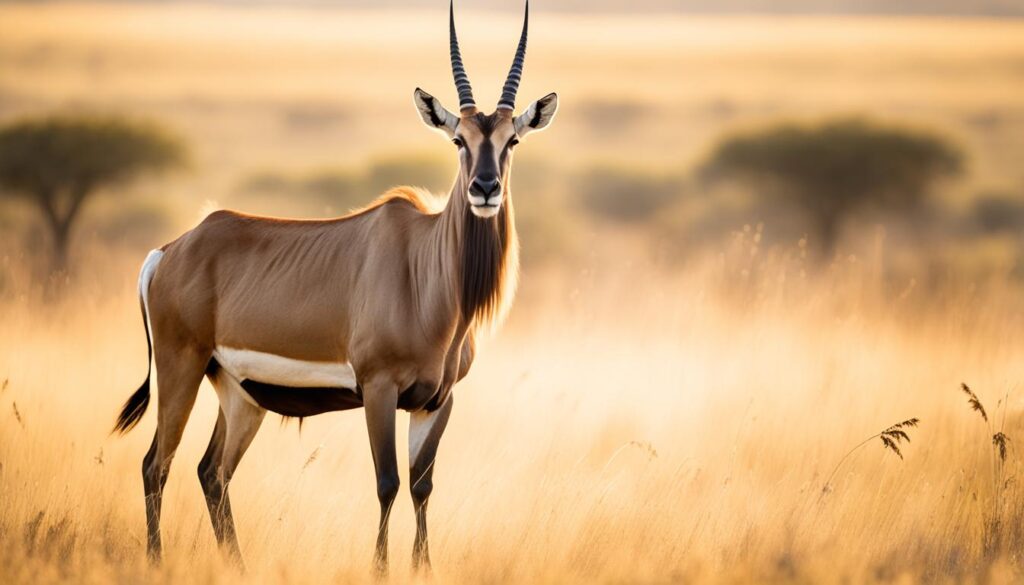
Hedgehog
Hedgehogs are small mammals known for their protective spines. These adorable creatures have captured the hearts of people all over the world. With their round bodies and tiny snouts, hedgehogs belong to the family Erinaceidae and are characterized by their unique and fascinating defense mechanism – spines.
There are 17 species of hedgehogs native to Europe, Asia, and Africa. Each species has its own distinctive features and habitat preferences. Some species, like the African pygmy hedgehog, have become popular pets due to their cute appearance and relatively low maintenance requirements.
Contrary to popular belief, hedgehogs are not related to porcupines. While they both have spines, porcupines belong to the family Erethizontidae and have longer, barbed quills. Hedgehogs, on the other hand, have short, pointy spines that cover their backs and sides, providing them with protection against predators.
Hedgehogs are nocturnal animals and are mainly insectivorous, feeding on a variety of small invertebrates such as beetles, worms, and slugs. They have a keen sense of smell and can rely on their spines to create noise by rubbing them together as a warning signal when they feel threatened. This distinctive behavior is known as “hedgehog popping.”
“Hedgehogs are fascinating creatures that have evolved a unique defense mechanism. Their spines not only provide protection but also serve as a warning sign to potential predators. Despite their small size, hedgehogs have captured the hearts of people worldwide and continue to intrigue us with their adorable appearance.”
Hedgehogs are generally solitary animals, only coming together during mating season. They build nests out of leaves and grasses as shelter. During winter, some hedgehog species, like the European hedgehog, hibernate to conserve energy. Their body temperature drops, their metabolism slows down, and they curl up in their nests for several months.

Despite their popularity, hedgehogs still face various threats in the wild. Habitat loss, urbanization, and road accidents are some of the challenges they encounter. Conservation efforts are underway to protect hedgehog populations and raise awareness about their significance in the ecosystem.
In summary, hedgehogs are small mammals with a unique appearance and an even more unique defense mechanism. Their spines serve as a key feature that distinguishes them from other animals. From their solitary nature to their nocturnal habits, hedgehogs continue to captivate the hearts and minds of animal enthusiasts around the world.
Hellbender
The hellbender is a giant salamander species found in freshwater rivers and streams in the eastern United States. Known for its unique appearance and aquatic habitat, the hellbender is an intriguing creature.
This large salamander has a long body, a long tail, and short legs, which are typical characteristics of all salamanders. With its wrinkled skin and flat head, the hellbender has an intimidating presence in its freshwater environment.
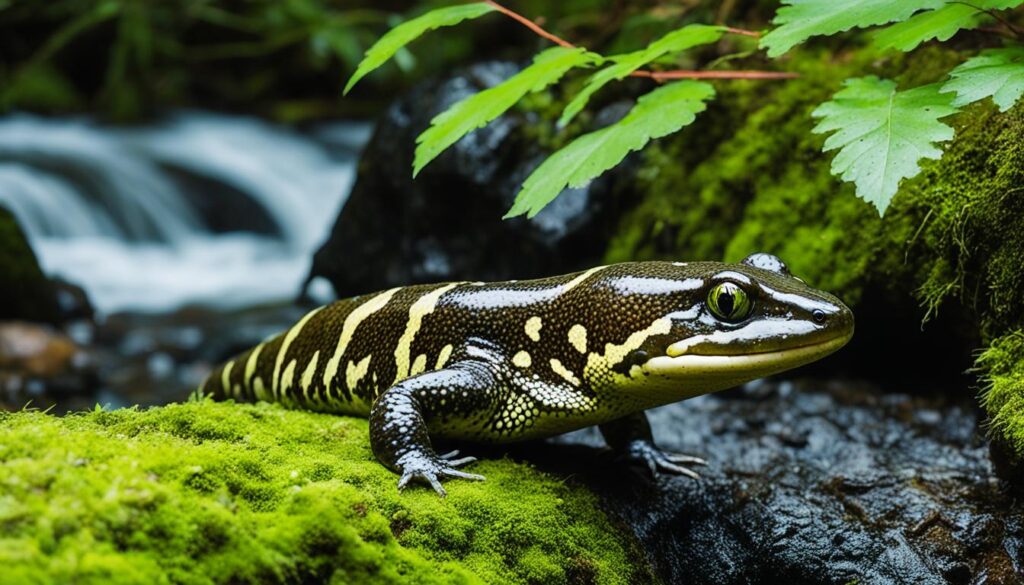 <!–Image source: seowriting.ai–>
<!–Image source: seowriting.ai–>“The hellbender is a fascinating and elusive species, perfectly adapted to its habitat in freshwater rivers. Its unique appearance and behavior make it a valuable component of our ecosystems.”
Herring Gull
The herring gull is a majestic bird commonly found in the coastal regions of Western Europe. With its distinctive white body, gray wings, and a red spot at the tip of its bill, the herring gull is a striking sight along the shores.
These gulls are known for their adaptability and can be found in a variety of coastal habitats, including beaches, cliffs, and harbors. They are skilled scavengers and opportunistic feeders, taking advantage of various food sources such as fish, crustaceans, and even garbage.
“The herring gull is not only a graceful flyer but also a vocal communicator, emitting a distinctive call that echoes along the coastline.”
One interesting fact about herring gulls is their nesting behavior. Unlike some other bird species, herring gulls often nest on buildings and rooftops near the coast, creating colonies known as gulleries. These locations provide them with a safe haven away from predators and access to ample food sources.
The herring gull plays an important role in coastal ecosystems, keeping the balance by controlling populations of prey species and scavenging on natural and human-made debris.
Summary:
The herring gull is a magnificent coastal bird with a white body, gray wings, and a red spot on its bill. It is commonly found in the coastal regions of Western Europe and is known for its adaptability, scavenging behavior, and nesting colonies on buildings. These gulls contribute to the ecological balance of coastal regions through their feeding habits and role as coastal scavengers.

Hippopotamus
The hippopotamus, also known as the “water horse,” is a fascinating semi-aquatic mammal. These large herbivores are native to sub-Saharan Africa and are well-known for their size and aggressive nature. Hippos spend most of their time in the water, which helps them regulate their body temperature and protect their sensitive skin from the sun.
One of the most remarkable aspects of hippos is their massive size. They can reach lengths of up to 16 feet and weigh as much as 3,000 pounds. Despite their hefty build, hippos are incredibly agile in the water, capable of swimming at impressive speeds. Their semi-aquatic lifestyle enables them to move effortlessly through rivers, lakes, and swamps.
While hippos are predominantly herbivorous, feeding on grasses and aquatic plants, their diet can vary depending on availability. They have strong jaws and sharp incisor teeth that allow them to tear through tough vegetation. Hippos emerge from the water at dusk to graze on land, consuming vast amounts of vegetation to sustain their massive size.
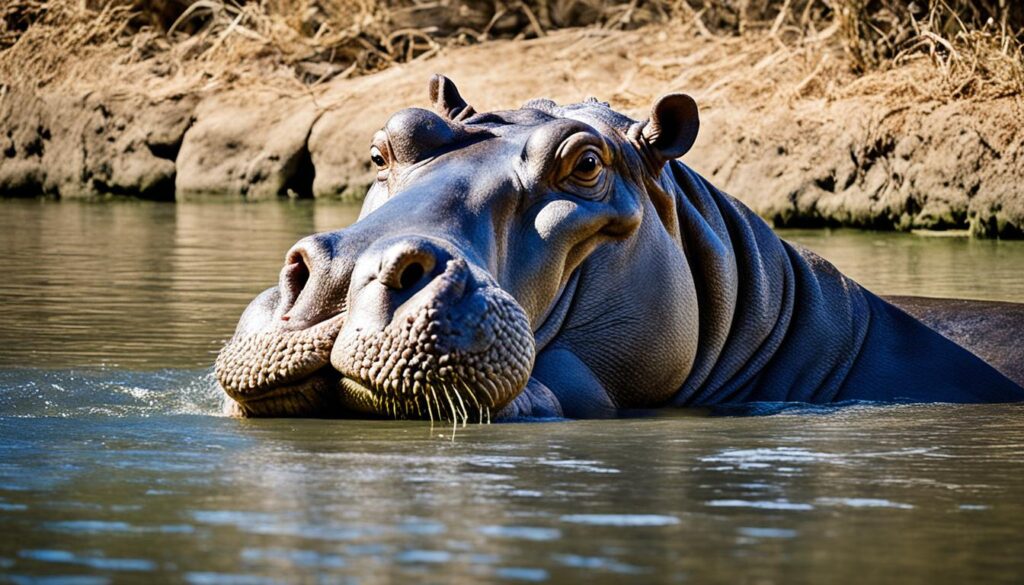
Did you know?
“Hippos are responsible for more human deaths in Africa than any other large animal. Despite their herbivorous nature, they are known to be extremely territorial and can demonstrate aggressive behavior when threatened or when protecting their young.”
Hoatzin
The hoatzin is a large bird that calls the lush Amazon rainforest its home. With its gray plumage, blue face, and an unmistakable bright orange crest on its head, the hoatzin stands out among the vibrant flora and fauna of the region. But what truly sets this avian species apart is its extraordinary digestive system, earning it the nickname “stink bird.”
The hoatzin possesses a unique digestive process that involves the fermentation of vegetation. This allows the bird to extract the necessary nutrients from its leafy diet. The fermentation takes place in its unusually large crop, a specialized part of the bird’s digestive tract. As a result, the hoatzin has a distinct odor, hence its colorful moniker.

Despite its rather unconventional digestion, the hoatzin thrives in the dense foliage of the Amazon rainforest. The region’s rich biodiversity provides an abundance of vegetation, making it an ideal habitat for this fascinating bird. The hoatzin’s large and muscular legs enable it to maneuver through the dense vegetation, while its strong wings allow for agile flight from tree to tree.
Fun Facts about the Hoatzin:
- The hoatzin is the only species in its family, Opisthocomidae, making it truly one-of-a-kind.
- Hoatzins are skilled swimmers and can take to the water when necessary, using their wings as paddles.
- These birds are highly social and can be found in small groups known as colonies.
- Young hoatzins possess specialized claws on their wings, which they use to climb trees before they are able to fly.
- The hoatzin’s call resembles a variety of sounds, including hooting, grunting, and hissing.
“The hoatzin’s unique digestive system showcases the incredible adaptations that exist within the animal kingdom. Its ability to ferment plant matter highlights the diverse strategies found in nature to optimize nutrient extraction and survival.” – Dr. Jane Wilson, Avian Biologist
With its stunning appearance and peculiar digestive system, the hoatzin exemplifies the wonders of the Amazon rainforest. This remarkable bird serves as a testament to the astonishing adaptations that enable species to thrive in their respective ecosystems.
Honey Badger
The honey badger, known for its fearlessness, is a member of the weasel family, making it a carnivorous predator in the animal kingdom. This remarkable creature can be found in various regions, including Africa, the Middle East, and the Indian subcontinent. Despite its name, the honey badger primarily feeds on a wide range of animals as part of its diet.
Physical Features
The honey badger is a small to medium-sized mammal, typically measuring around 55 to 70 centimeters in length. It has a stocky build, with strong legs and sharp claws that enable it to dig burrows and excavate food. Its body is covered in coarse fur, which can range in color from gray to black, providing effective camouflage in different habitats.
The honey badger’s head is broad and flat, featuring small, rounded ears and sharp, strong teeth. Its snout is elongated and pointed, allowing for efficient hunting and feeding. One of its most distinctive physical attributes is its anal gland, which emits a musky odor that serves as a territorial marking mechanism and a means of defense against predators.
Habitat and Behavior
Honey badgers are adaptable creatures, capable of inhabiting various environments such as grasslands, forests, and even rocky terrain. They are highly skilled climbers and swimmers, making them versatile hunters and explorers in their natural habitats.
These tenacious predators are known for their bold and daring nature. Honey badgers display remarkable fearlessness when confronted by larger and more powerful animals, often standing their ground and defending themselves fiercely when threatened. They have been observed taking on adversaries such as lions and leopards, displaying impressive agility and a fierce fighting spirit.
“Honey badgers are one of the most fearless animals in the animal kingdom. They fearlessly face challenges head-on, making them an extraordinary species.” – Wildlife Expert
Hunting and Diet
The honey badger is a carnivorous creature with a diverse diet. It preys on various animals, including small mammals, birds, reptiles, insects, and even larger creatures such as snakes. Its sharp teeth and strong jaws allow it to tear through flesh and devour its prey with efficiency.
The honey badger’s diet is not limited to just meat. It also consumes fruits, berries, and honey whenever the opportunity arises. This diverse feeding behavior contributes to its survival in different environments and ensures it can adapt to changing food availability.
Conservation Status
The honey badger is currently listed as a species of least concern by the International Union for Conservation of Nature (IUCN). Although it faces threats from habitat loss and fragmentation due to human activities, the honey badger’s wide distribution and adaptability have contributed to its stable population.
Efforts are ongoing to protect the honey badger and its natural habitats, as preserving biodiversity is crucial for the overall health and balance of ecosystems.
Honey Badger Table
| Common Name | Honey Badger |
|---|---|
| Scientific Name | Mellivora capensis |
| Family | Mustelidae |
| Size | 55-70 centimeters in length |
| Habitat | Grasslands, forests, rocky terrain |
| Diet | Carnivorous, preys on small mammals, birds, reptiles, insects, and more |
| Conservation Status | Least Concern |
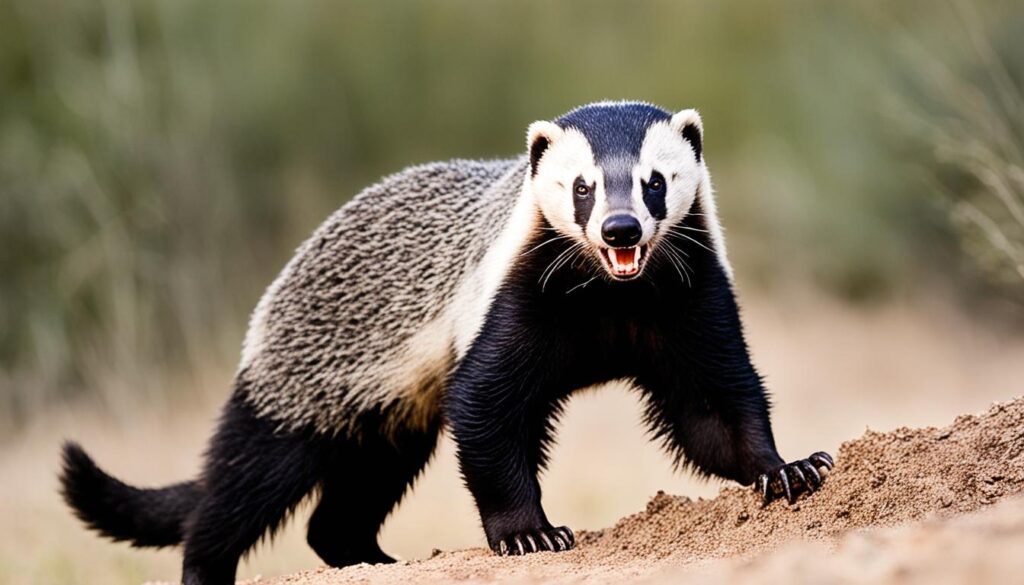
Honey Bee
Honey bees are fascinating social insects that live in colonies, working together to build intricate hives and gather food. Each colony consists of different types of bees, with specific roles and responsibilities.
The queen bee is the mother of all the bees in the colony. She lays eggs and is the central figure around which the entire hive functions. The female worker bees, who make up the majority of the colony, perform various tasks such as collecting nectar, pollen, and water, building and repairing the hive, and caring for the young bees. The male drones have the main purpose of mating with new queens from other colonies.
One of the most fascinating behaviors of worker bees is their unique communication system. When a worker bee discovers a good source of nectar, she returns to the hive and performs a dance-like series of movements known as the “waggle dance.” Through this intricate dance, the worker bee conveys important information about the location of the nectar source, such as its direction and distance, to her fellow hive members.
“The dance language of honey bees is one of the wonders of the animal world. Through their movements and scent signals, they are able to communicate vital information that ensures the survival of the entire colony.” – Dr. Bee Researcher
The foraging worker bees rely on the information from the waggle dance to navigate and find the nectar source, which can be miles away from the hive. This remarkable communication system allows honey bees to efficiently exploit the available nectar sources and ensure the survival of the colony.
Benefits of Honey Bees as Pollinators
In addition to producing honey, honey bees play a crucial role in pollination. As they visit flowers in search of nectar, they inadvertently transfer pollen from the male parts of the flower to the female parts, enabling the fertilization process and the production of fruits and seeds.
Honey bees are responsible for pollinating a wide variety of crops, including fruits, vegetables, nuts, and oilseeds. They contribute to food production and ecosystem sustainability, making them essential for both agricultural and natural environments.
| Key Roles | |
|---|---|
| Queen Bee | The mother of all bees and the central figure in the hive. |
| Worker Bees | The majority of the colony, performing various tasks such as foraging, hive maintenance, and caring for young bees. |
| Drones | Males with the primary purpose of mating with new queens. |
Through their complex social structure and remarkable communication system, honey bees demonstrate the power of collective effort and cooperation within a colony. Their vital role as pollinators cannot be overstated, as they contribute to the health and productivity of ecosystems worldwide.

Conclusion
This article has delved into the fascinating world of animals that start with the letter H. From the depths of the ocean to the heights of the rainforest, the animal kingdom showcases a diverse array of creatures, each with its own unique characteristics and habitats.
Throughout this article, we have discovered marine fish like the haddock, vulnerable due to unsustainable fishing practices, and the majestic harp seal with its gray skin and distinctive black marking. We have marveled at the power and size of the harpy eagle, the largest eagle in the Americas, and learned about the hartebeest, a graceful antelope found in African savannas.
But the animal kingdom doesn’t stop there. We’ve also encountered the spiny hedgehog, the enormous hippopotamus that roams semi-aquatic habitats, and the amazing hoatzin with its unique digestion of vegetation in the Amazon rainforest. From the honey badger’s fearlessness to the intricate social structures of honey bees, the natural world never ceases to amaze.
As we delve into the animal kingdom, we are reminded of the vast diversity of creatures that inhabit our planet. Whether swimming in the oceans, soaring through the skies, or roaming the vast plains, animals that start with H are just a fraction of the wondrous variety awaiting discovery.
